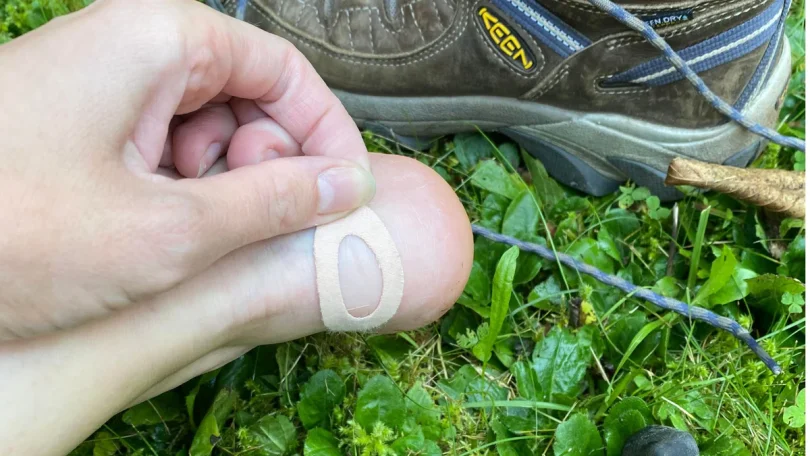Everest Base Camp Trek is named Enough. Every trekker’s dream is to do the Everest trek once in a lifetime. Enjoy the greatest single foot expedition on Earth and discover this epic Hike to Everest Base Camp – with images of the world’s highest peaks, colorful and vibrant outlook of Sherpa culture, testaments to the glory days during Sir Edmund Hillary’s astounding summit adventure, or step up wearing vitas for one special moment standing at base camp!
A successful Mount Everest base camp trek, however, is more than just selecting the right Everest Base Camp trek from the available EBC trek packages and even planning for the EBC hike cost. A globally circulating, excuse-giving foe frequently hides behind an aborted trip: the foot blister. This extensive guide will prepare you for the EBC Trek before take off and includes all: from Ultimate Everest Base Camp Trek Itinerary to Itemized Everest Base Camp Trek Price plus How to Heal Blisters on Feet so YOU Can Keep Hiking…
The Khumbu Call: Knowing the Everest Base Camp Trek
The Everest Base Camp holds a unique attraction to a good deal of the journey community, the place to begin for climbers who dream of accomplishing the summit of the world’s highest hmountainand a final trekking destination that lures 30,000 people every year. The Everest Base Camp Trek Distance is approximately 130km or eighty miles (round trip), which does include your arriving and departing day from Kathmandu and returning to KTM.
Taking walks all the way to the Everest Base Camp Trek is graded mild to hard, with altitude being the number one trouble. While the walking isn’t so hard technically, the unrelenting slog and gradient that never eases reminds you that you do need to be properly prepared – not just for thin air but also constant rubbing between your feet and boots. If you get it wrong here, you are the quickest way to disaster and will destroy your dream Mount Everest Base Camp Tour!
How to Plan the Best Everest Base Camp Trek Itinerary
A practical and safe EBC Trek Itinerary makes the difference. All in all nice recommended length for Mount Everest Base Camp with 12 to 16 days of strolling. This greater time is crucial because it includes essential acclimatization days around villages high up the trail, usually Namche Bazaar (three,440 meters or eleven,286 feet) and Dingboche (four,410 meters or 14,468 feet). Obviously, the thing is that you can’t rush this acclimatization process, and it’s really not worth taking risks regardless of how much you can save on your Everest Base Camp Trek cost… If anything, going slow and steady will indeed be the actual secret weapon that wins through on this trek to Everest Base Camp.
The Blister Issue: Why Foot care is important on the EBC Trek?
A Long Everest Base Camp Walk – your feet will endure the constant pounding and repetitive motion on hilly terrain, confined, and weight-loaded in bulky boots. The combination of too much friction, heat, and moisture is a triple threat you are unlikely to avoid when doing an intense multi-day Everest Base Camp Tour. (Imagine how much harder to keep moving despite painful, small blisters and having your hike be in jeopardy because you are slowly damaging yourself – it’s worth it) That’s why it is not comfortable. Feet are a Basic Element of having Full Safety & Success on the best-ever base Camp Trek to Everest. You’re going to own the right down jacket, and a duly supported Everest Base Camp Trek Itinerary.
Blister Hotspots are a Hiker’s Worst Enemy: Step-by-Step Treatment to Keep on Trekking
One top tip is to treat any problems as they develop. If you have a painful blister on your foot while out hiking, rather than wait until you have left it too long and the problem turns into a large fluid fluid-filled bubble that’s impossible to deal with when off, we did in this Blog. How To Treat Painful Blisters & Keep Hiking. Here’s what you can do to prevent a hot spot from turning into a blister: As soon as you notice a hot spot, stop walking and remove your boot and sock, then clean the area with antiseptic wipes or warm soapy water (and clean your hands while you’re at it). ‘…secure then with medical tape’ and, (if your blister is occurring in a ‘high friction’ area), ‘consider adding an extra layer of duct tape over the top of the initial dressing to make it waterproof and more robust – replace the dressing daily or as soon as possible would help’ all in all you’re aiming to form a non‐abrasive surface allowing you to ENJOY EBC Trekking.
Prevention is better than the Cure: Preparing for an Everest Base Camp Hike..
What to do to prevent foot blisters on your Mount Everest Base Camp Trek. 1) Break in your boots if you plan to go hiking and climbing for at least for few months before going trek. Second, always double- or triple-up on socks — such as the tried-and-true combo: a thin liner cheap moisture-wicking sock under a thick wool hiking one; Mr. Walshe says you want the liner to be snug and do the rubbing against the outer sock (instead of your skin). Fourth, keep your feet dry – change socks midday if they are damp or sweaty (or you’ve walked through a wet area); Dry friction is much lower than wet friction.
Gear Pick: The Best Footwear for the Everest Base Camp Trek
The weight, fitting, and therefore the stuff for your hiking boots are the deciding factors in completing the Everest Base Camp Trek. You want boots that are mid to high cut and provide sturdy ankle support, as well as full waterproofing. Most critically, the boots have to be a half-size up (some say even a full size) from your street shoe (to accommodate both foot swelling at altitude and thick socks), without your toes hammering into the front of them on steep descents. Make sure you splurge on quality footwear, don’t try to save a few bucks here – rubbish shoes are the first cause of painful blisters and failed hikes!
Guide and First Aid on the EBC Trek
You ought to be touring with an expert manual for your Mount Everest Base Camp tour, and they have to have a very good first useful resource kit, which may also encompass sterile objects to deal with massive blisters. But, you need to in no way depend upon them in isolation; it’s important to hold your personal blister package, which could consist of hydrocolloid bandages (which include Compeed), long-lasting medical tape like Leukotape, antiseptic wipes, and a sterile needle. Do not take the pain and silently bear it, thinking that a blister will go away. Addressing a developing blister early is what stands between being an inconvenient little Southwest coastal path bugbear and having to prematurely abandon your beautiful EBC experience!
Final Conclusion
Your adventure travel to Everest Base Camp is one of the most memorable trekking journeys inNepala a lifetime experience which offers you a picturesque view of high mountains. The planning, ensuring everything from the Everest Base Camp trek cost to the best Everest Base Camp trek package, all your plan needs to be spot on. But you’ll have to remind yourself again and again that the hardest stretch of your journey isn’t between two points, but within the space of a step. By respectfully tapping the tools of prevention and practical treatment for blisters, doing one very important first, decisive thing: you’re protecting both your body and dream. So treat your feet well and enjoy the air – you’ll absolutely love the slow pace trek to base camp Everest, trust me: In comfort AND leave behind mi-good memories.






